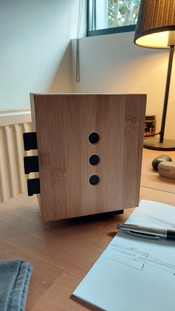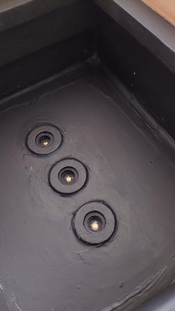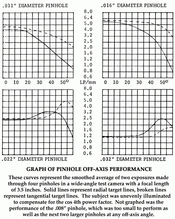From Donald Qualls, post #5: "Mr. Pinhole probably has a cutoff at some level of light drop-off. My paper roll pinhole mentioned in my previous post exposes the film at nearly 90 degrees from the central axis (the mount for the pinhole is quite thin in this case)."
Mr. Pinhole is quick and easy to use, but an advanced pinhole photographer may well prefer Pinhole Designer (
https://www.pinhole.cz/en/pinholedesigner/). This program lets the photographer select the wavelength of light (useful when using blue sensitive or IR film) and the constant in the formula used for determining optimum pinhole diameter. Neither program mentions the occasional desirability of using a slightly larger pinhole than calculated for extreme wide angle pinhole photography to improve image edge sharpness at a cost of reduced center sharpness.
Several decades ago I improvised a camera and appropriate test targets to verify this. The camera and targets were donated to Eric Renner at Pinhole Resource long ago. The curves represent the smoothed average of two exposures made through four pinholes in a wide-angle test camera with a focal length of 3.5 inches. Solid lines represent radial target lines, broken lines represent tangential target lines. The subject was unevenly illuminated to compensate for the cos 4th power factor. Not graphed was the performance of the .008" pinhole, which was too small to perform as well as the higher pinholes at any off-axis angle. These tests were conducted with incandescent lighting (maybe 2800K , maybe 400K).
The graphs derived from these tests is reproduced below. Lord Kevin's constant in many pinhole diameter formulae seems to be popular, although based on my tests and photographs, a slightly smaller constant is better. I made the pinholes with very thin edges. Less careful fabrication might result in much worse image edge sharpness.
Two favorite sources used in my research are: Young, M. "Pinhole Optics," Applied Optics, Vol. 10, No. 12 (December 1971) 2763-2767) and Jon Grepstad:
https://jongrepstad.com/pinhole-photography/pinhole-photography-history-images-cameras-formulas/













